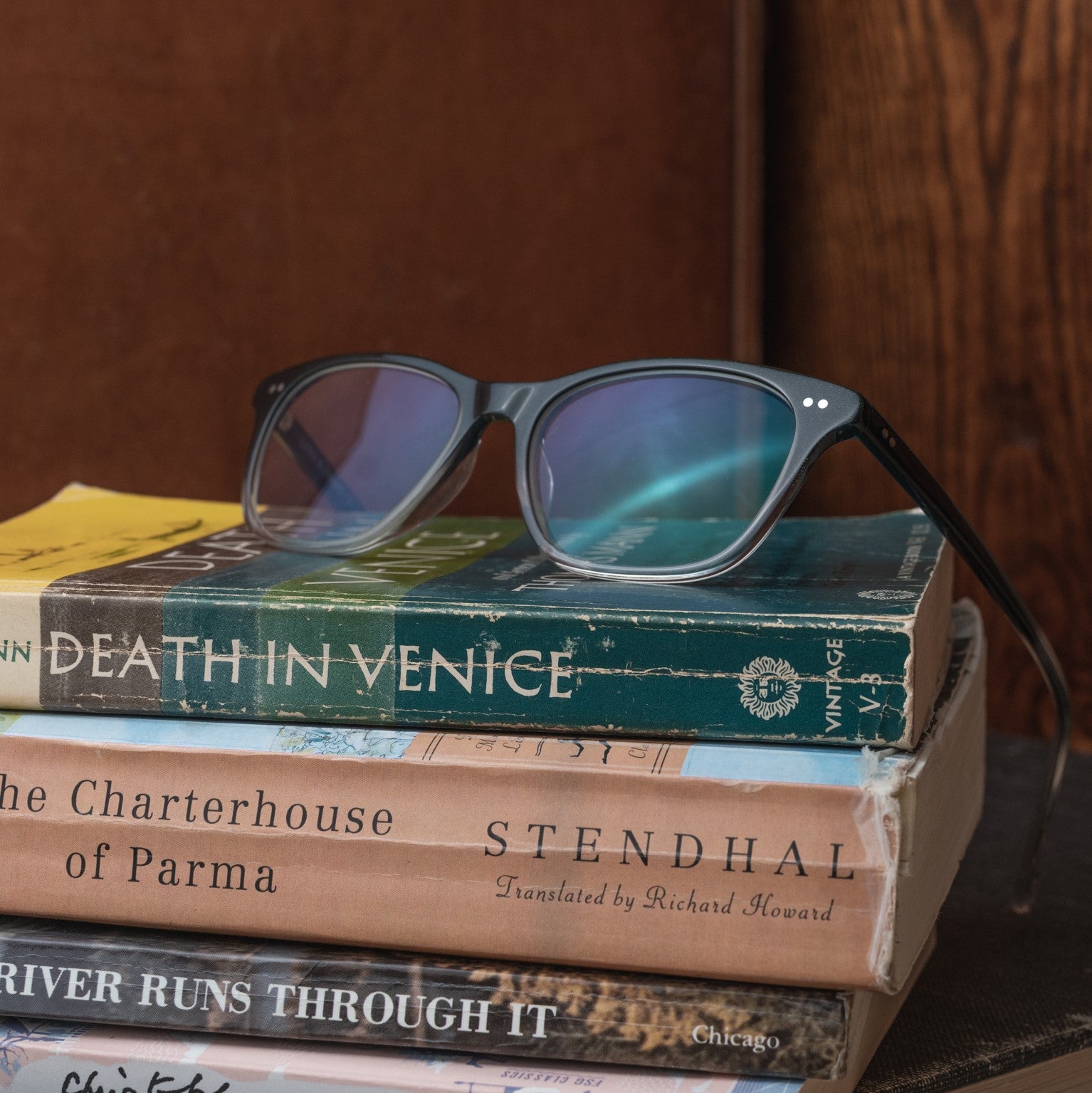Menu
- EV READERS™
Reading Glasses, Reimagined
Mobile Menu
SHOP EV READERS BY BRAND
SHOP EYEGLASSES BY BRAND
SHOP SUNGLASSES BY BRAND
SHOP READING GLASSES BY BRAND

Reading
EXTENDED VISION™ READING GLASSES
Introducing EV Readers: Reading glasses tailor-made to your measurements and designed for the way you need to see.
SINGLE VISION READING GLASSES
Handmade frames in styles by Raen, STATE Optical and L&F paired with custom-made single vision reading lenses.
EXTENDED VISION™ READING GLASSES
Introducing EV Readers: Reading glasses tailor-made to your measurements and designed for the way you need to see.

SINGLE VISION READING GLASSES
Handmade frames in styles by Raen, STATE Optical and L&F paired with custom-made single vision reading lenses.

Prescription
LENSES
Now you can get custom-made lenses with premium coatings mounted into your own favorite frames. Enjoy a better reading glass experience with our collection of Extended Vision™ Reading Lenses. Or give your favorite prescription glasses a second life with our premium Rx Replacement Lenses.
Now you can get custom-made lenses with premium coatings mounted into your own favorite frames. Enjoy a better reading glass experience with our collection of Extended Vision™ Reading Lenses. Or give your favorite prescription glasses a second life with our premium Rx Replacement Lenses.

SHOP REPLACEMENT LENSES

SHOP OMBRAZ LENSES

SHOP EXTENDED VISION™ READING LENSES

L&F Visionaries: Le Corbusier
“The sky is radiant and for a fortnight we have been living in miraculous new conditions: a home that is heavenly, because everything is sky and light, space and simplicity.”
In the first of a series on people we see as visionaries in their field, we turn our lens on Charles-Édouard Jeanneret, known as Le Corbusier, urban planner, designer, writer, painter and one of the largest influencers of modern architecture.

Born in Switzerland in 1887, Jeanneret trained as an artist and spent his time traveling until 1917, ultimately settling in Paris. Immediately he met painter, Amedee Ozenfant, with whom he developed the concept of “Purism." Together they founded a magazine: L'Esprit Nouveau, where they published functionalist ideas in architecture and city planning. Everything he published during that time was under pseudonyms, ultimately Jeanneret stuck with “Le Corbusier,” his mother's maiden name, preferring to use his own name only for his painting. The Articles he and Ozenfnt wrote from 1917 to 1922 led to his idea of the house as "a machine for living".

The Birth of the Machine, 1927.
"The plan is the generator."
His overall philosophy was that the house needed to function like a machine. It must function efficiently and without extraneous parts. This did not apply to his aesthetics, but purely towards practicality of use, cutting all accoutrements and unnecessary furnishings. (Emulating the efficiency of a machine) “The house needs everything necessary for healthful personal maintenance and private cultivation, but nothing materially extraneous.” You could draw similarities with Frank Lloyd Wright in that the bedrooms in his designs were small, discouraging laziness.
“A house is a machine for living in. Baths, sun, hot-water, cold-water, warmth at will, conservation of food, hygiene, beauty in the sense of good proportion. An armchair is a machine for sitting in and so on.”

Le Corb in his 2,600-square-foot Paris penthouse occupying the top two floors of Immeuble Molitor, the world’s first apartment building with fully glazed facades. When designing this personal space, he incorporated a large studio for pursuing his first love: art. Le Corbusier and his wife spent more than 30 years here.

A note he sent to his mother in 1934 referring to his new space:
“The sky is radiant and for a fortnight we have been living in miraculous new conditions: a home that is heavenly, because everything is sky and light, space and simplicity.”
Le Corbusier's most well-known projects: The Colline Notre Dame du Haut building,


Villa Savoye, outskirts of Paris, France


The Unité d'Habitation in Marseille, France,


The master City plan for Chandigarh, India, and the unbuilt prototype for mass housing, Maison Dom-Ino,Which was a conception of a system of construction which envisaged the problems of post-war reconstruction.

Le Corbusier died in 1965 while taking a long swim in the Mediterranean against his doctor's orders. Locals spotted and offered to assist the 77-year-old struggling to crawl up the rocks to get out of the water, but he declined their offers. His body later washed up on shore.
Also in L&Festyle - A Blog on Art, Architecture, Photography, Design, Fashion, Literature, Music, Food & Drink

Gabe Kapler's Postcards from the Road - Detroit

Gabe Kapler's Postcards from the Road - New York City
Oftentimes fans, friends, and teammates will ask me for my favorite cities to travel to when I'm on the road hard. It's hard for me to make any list without including New York City.

At Home with Gabe Kapler visiting San Francisco's Cold Drinks Bar
Save 15% today
Join the L&F Insider mailing list and get 15% off your order.*
* Valid for orders over $100
Let the savings begin!
LANDF-XXXXXX
Use CodeClick the button above to automatically apply your discount code to your order.







